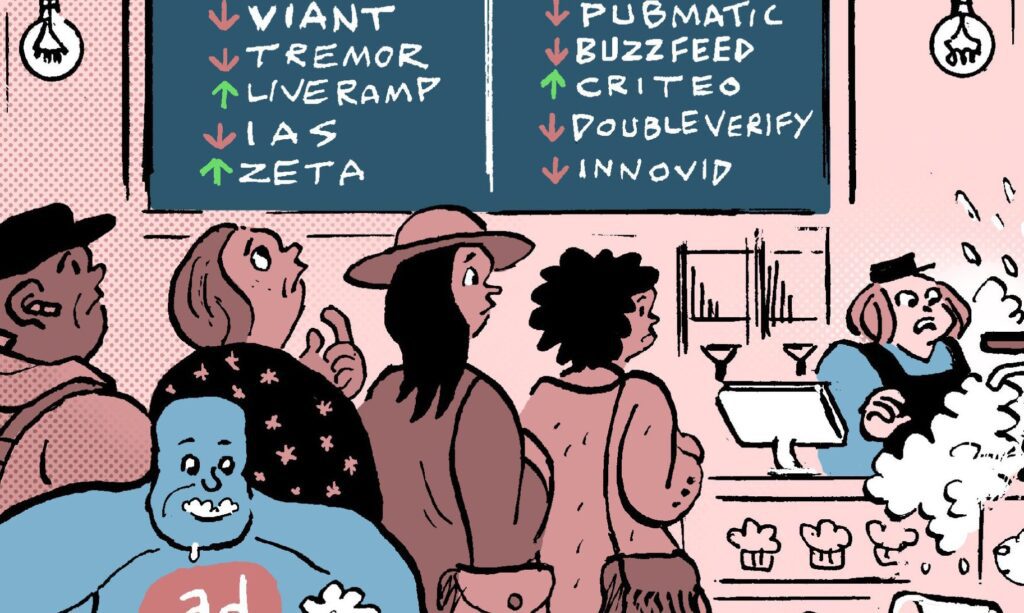 Advanced persistent bots (APBs), capable of wreaking havoc on marketing tools, are the most common bad bot type, according to the 2016 Distil Networks Bad Bot Report. They possess a wide range of capabilities, including the ability to evade detection, impersonate humans, change identities and vary attack patterns.
Advanced persistent bots (APBs), capable of wreaking havoc on marketing tools, are the most common bad bot type, according to the 2016 Distil Networks Bad Bot Report. They possess a wide range of capabilities, including the ability to evade detection, impersonate humans, change identities and vary attack patterns.
Marketing tools track humans. Through impersonation, APBs cannot be accounted for—they simply blend in. They distort visitor tracking and reporting, rendering critical business marketing tools ineffective.
JavaScript and Tracking
During site visitor sessions, marketing tools use JavaScript to perform tracking by injecting analytics tags/tracking pixels and cookies into users’ browsers. Any ad click or transaction is tracked and reported in this manner.
The following data typically gets routed to databases owned by the marketing vendor:
- Visitor information – operating system, origin, new or returning visitor
- User interactions – page views, time on page, clicks
- Conversions – web forms filled out, content downloaded
- Social media interactions – likes, retweets, reposts
These data are then analyzed, parsed, and usually fed into reporting tools.
APBs configured with commercially available tools like Selenium, PhantomJS, and SlimerJS load JavaScript by default. This triggers the tracking mechanisms listed above and skews metrics.
Performance and analytics
Performance metrics are all impacted. Making matters worse, nothing is in place for marketing teams to manually check their site traffic quality. Gauging the impact bots have on performance metrics is guesswork.
Well-known performance and analytics tools include:
- Analytics and tracking – Google Analytics, MixPanel, Adobe Marketing Cloud, and Kissmetrics
- Performance and attribution – Bizible, Adaptive Insights, and Beckon
- Testing and optimization – Optimizely, On Interactive, and Webtrends
In considering the impact bots might be having on your marketing operations, ask yourself, “Which of these (or similar) tools are in my stack, and what could it mean to my business if they’re inaccurate by 10% or more?”
What are the consequences of bots distorting your data?
Here are several scenarios revealing how the presence of bots might be affecting your tools:
What effect could skewed analytics have on your business?
Like most marketers, you probably review Google Analytics on a frequent basis. Perhaps you’ve noticed a recent spike of new users from Germany showing interest in your products. They’re spending more time on your site, viewing more pages, and checking out all of your products in detail. You can even tell from your heatmapping tool that they tend to view all page content, rather than just content above the fold. Should you invest more in the German market, or create German-language assets? Perhaps but not if the new users aren’t human.
How does skewed attribution data affect decisions?
Say you’ve been reviewing your lead attribution data to determine where to spend more of your marketing budget. It appears that people really like an asset promoted on your site. Unknown to you, the “interest” is really generated by a bot running rampant on your site. Being oblivious to this, you decide to invest in the creation of similar assets. Would it matter if no humans ever click on it?
What could a skewed A/B test mean to your business?
While A/B testing different colors on your website, you’ve determined that half of visitors prefer orange to blue buttons. APBs aren’t subject to the rules of psychology and have no color preference. Including their choices in your dataset could lead to decisions which damage conversions for real humans.
APBs and advertisers
Advertisers need to provide accurate site performance information wherever customer ads are being served. False reporting costs them in terms of customers and partners—in turn affecting bottom lines.
Advertisers rely on JavaScript to serve ads and redirect visitors to customer sites, so APBs impact their business model. As they crawl across websites, the bad bots click on ads, thereby driving up PPC costs.
On the flipside, advertisers are faced with artificially inflated session counts, high bounce rates, and few, if any, conversions. Bogus numbers can lead analysts to believe assets are underperforming, when in fact the publishing site has a bot problem.
The APBs impact of on publishers
Pay-per-click (PPC) breaks out into several categories:
- Display & Native – AdRoll, AppNexus, Rubicon, DoubleClick
- Video – Brightcove, Vimeo, Ooyala
- Search – Google and Bing
- Social – Facebook, Twitter, and LinkedIn
APBs impact publisher sites in numerous ways. Ad publishers typically have rich content (the typical bot target), and APBs interact with ads on these sites, too. They might be attacking at scale, throttling resources such as bandwidth, or overloading web serving infrastructure, thereby causing pages to load slowly or the site to go offline.
Bot perpetrators running scams send traffic to publisher sites, resulting in the perception of boosted site performance. Since APBs can perform user-like actions—including browsing pages, varying time on page, and filling out forms—high click-rates or conversion rates may result. However, these are mostly unusable leads or non-valuable traffic, so the publishing site’s reputation is damaged and ad revenue is lost.
How much do these problems matter to your marketing operations?
The APB problem is getting worse
According to data from the recent bot report, APBs now make up 88% of the bad bots visiting the average website. Additionally, 2015 saw a shift if the focus of bot operators, where the software they used to attack websites greatly improved.
The quantity of simple bots, which by definition are easier to contain, dropped by almost 11% and only accounted for 12% of all bad bot traffic in 2015.
The report also uncovered the fact that 53% of bad bots are able to load external resources like JavaScript and will end up falsely attributed as humans by marketing tools.
Keeping APBs out of your marketing stack
APBs are wreaking havoc on the marketing tool ecosystem. As APB deployments continue to increase in frequency, the downstream impact on the marketing tool ecosystem will become a larger business risk. Marketing performance will continue to dip as costs increase because of artificial demand, while actual performance will decline as misalignment with true customer behavior increases.
The size and scale of the problem is massive and requires a coordinated effort to eliminate bad bot traffic. Businesses need a eliminate advanced persistent bot threats, but also continue to innovate alongside the bot creators, without disrupting good bots like search engine crawlers–and actual human traffic.
Bot mitigation technologies should fit into existing technology stacks and compliment controls, while providing reporting metrics to help marketing teams reconcile anomalies and false KPI reporting.
Peter Zavlaris is the product marketing manager of Distil Networks.
Related Articles:
Special Report: Optimizing Marketing Automation
Using Dashboards to Visualize Marketing Success
3 Tools for Cross Channel Attribution




 Network
Network

